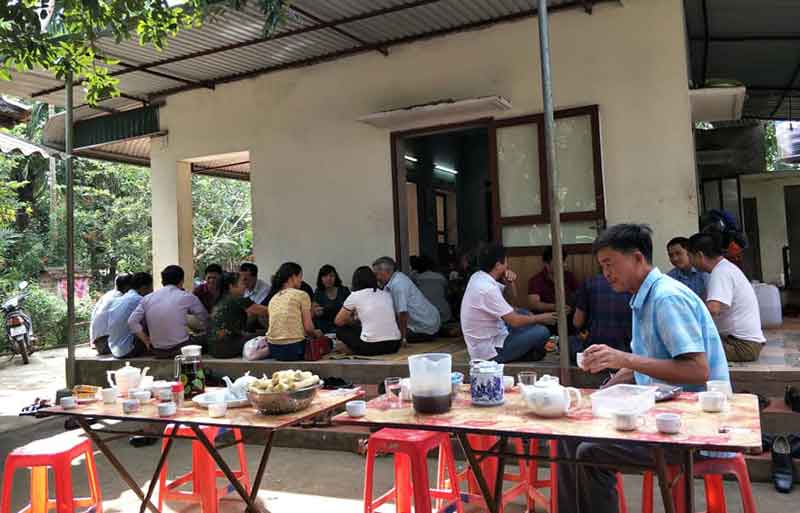
(HBO) – Com De Festival is a traditional event of the Muong community in Muong Ram area, Lac Thinh commune of Yen Thuy district. It is held on the 26th day of the 10th lunar month each year (which fell on December 2 this year).
Muong Ram people celebrate three main festivals every year,
namely the Lunar New Year Festival, the National Day Festival (September 2),
and the Com De Festival. The last one is organised as big as the Lunar New Year
Festival – the most important traditional festival of Vietnam.
To mark the Com De Festival, which is unique in
that it is celebrated only in Lac Thinh commune, all Muong Ram people –
regardless of where they live or work – always try to spare time to return to
their hometown.
Food trays offering to the ancestors always
include a boiled papaya, steamed luffa, boiled or steamed fresh bamboo shoots,
and grinded roasted sesame without salt or any other spices. Particularly, "com
de” (steamed glutinous rice fermented in wild leaves) is the most important
offering.
At present, thanks to better living conditions,
people also offer meat aside from vegetarian food to their ancestors.
Locals perform the festival’s rituals on the
afternoon of the 25th day of the 10th lunar month or the early morning of the
following day because they believe the early morning is the most sacred time.
The offering trays are placed in the middle and
in front of the house. The family head can invite a shaman or say prayers by
themselves to wish for good weather, bumper crops and health. After that, all
family members gather and enjoy the food. Their relatives and friends also come
to share the joy and wish for good luck and health.
The Com De Festival has become a cultural
identity of Muong Ram people. At present, when their lives have been improved,
locals attach even greater importance to this event and consider this a proud
cultural practice./.
With an increasingly vibrant and widespread emulation movement aimed at building cultured residential areas and cultured families, Yen Thuy District has been making steady progress toward improving both the material and spiritual well-being of its people, while fostering a civilized, prosperous, beautiful, and progressive community.
Once lacking recreational spaces and community facilities, Residential Group 2 in Quynh Lam Ward (Hoa Binh City) has recently received attention for the construction of a new, spacious, and fully equipped cultural house. The project followed the model of state support combined with public contributions in both labor and funding.
The "All people unite to build cultural life" movement, which has been effectively integrated with Kim Boi district’s socio-economic development goals, is fostering a lively spirit of emulation across local residential areas, hamlets, villages, public agencies, and enterprises. In addition, through the initiative, traditional cultural values are being preserved and promoted, while community solidarity and mutual support in poverty reduction and economic development are being strengthened.
A working delegation of the Hoa Binh provincial People’s Committee led by its Permanent Vice Chairman Nguyen Van Toan on June 11 inspected the progress of a project to build the Mo Muong Cultural Heritage Conservation Space linked to tourism services in Hop Phong commune, Cao Phong district.
Born and growing in the heroic land of Muong Dong, Dinh Thi Kieu Dung, a resident in Bo town of Kim Boi district, in her childhood was nurtured by the sweet lullabies of her grandmother and mother. These melodies deeply imprinted on her soul, becoming an inseparable part of her love for her ethnic group's culture. For over 20 years, this love for her hometown has driven Dung to research, collect, and pass down the cultural values of the Muong people to future generations.
In the final days of May, the Ethnic Art Troupe of Hoa Binh Province organized performances to serve the people in remote, mountainous, and particularly disadvantaged areas within the province. These were not just ordinary artistic shows, but they were the meaningful journeys aimed at spreading cultural values, enhancing the spiritual life of the people and contributing to the preservation of ethnic minority cultural identities.


